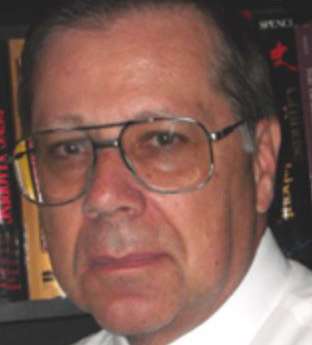
By JOHN RICHARD SCHROCK
Across the U.S., politicians are running campaigns asserting that statewide school closures in 2020 were not only unnecessary but totally useless in stemming the spread of COVID-19.
Medical research based on actual records of hospitalizations and deaths in the early months of the pandemic clearly shows that substantially more deaths would have occurred if the schools would have been kept open.
This was clearly documented in "Association Between Statewide School Closure and COVID-19 Incidence and Mortality in the U.S." published in the September 1, 2020 issue of the authoritative Journal of the American Medical Association. Authors Katherine A. Auger, MD and eleven other medical researchers analyzed the extensive data that were pouring in from across the country to answer the question: "Was statewide school closure associated with decreased incidence and mortality for coronavirus disease 2019 (COVID-19)?"
Data show that during this early time,"...school closure was associated with a significant decline in both incidence of COVID-19 (adjusted relative change per week, −62%) and mortality (adjusted relative change per week, −58%)."
They note that "all 50 states closed schools in March 2020 despite uncertainty if school closure would be effective." But based on overall cumulative data, they estimated that closing schools early "...when the cumulative incidence of COVID-19 was in the lowest quartile compared with the highest quartile was associated with 128.7 fewer cases per 100,000 population over 26 days and with 1.5 fewer deaths per 100,000 population over 16 days." Simply, those states that closed schools when rates of transmission were still low (bottom one-fourth) saw significantly fewer cases and deaths than those that waited.
Their data allowed an estimate of cases that would have occurred without school closure at "...638.7 cases per 100,000 that would have occurred if schools had remained open...compared with the 214.8 cases per 100,000 estimated from the school closure model...."
The researchers calculated "...absolute differences of 423.9 cases and 12.6 deaths per 100,000 to 322.2 million residents nationally..." which indicates that school closure "...may have been associated with approximately 1.37 million fewer cases of COVID-19 over a 26-day period and 40,600 fewer deaths over a 16-day period." But it is difficult to predict accurately the lives saved because there were considerable "other concurrent nonpharmaceutical interventions" that included "closing nonessential businesses, and restaurants and bars, and prohibiting large gatherings" as well as "...increased handwashing, cleaning, and wearing of masks [that] evolved simultaneously." Variations in availability of testing also hindered measuring COVID-19 incidence.
Today, it is obvious that countries such as New Zealand were able to suppress coronavirus spread by total isolation from the rest of the world. And many Far East countries that highly value education did return to the classroom with virtually 100 percent cooperation of students in handwashing, regular temperature-taking, and total masking. They forfeited their summer vacation in order to extend the school year and make up for any learning loss. In the Far East, the spread was well-contained by everyone using a green-yellow-red cellphone system that coordinated daily testing with isolation of persons (yellow) whose cell phones had come near a newly-infected person, and a quarantine of those who tested positive (red).
By May 8, 2020, researchers published research in the journal Science showing standard contact tracing by interviewing new patients was too-little, too-late, and only the use of cell phone apps could slow the epidemic. But we were too concerned with "individual freedoms" (selfishness) and cell phone "privacy" to adopt these proven-successful procedures. As a result, the U.S. demonstrated the worst population response to the COVID-19 epidemic of any nation in the world. And yes, we likewise suffered a 1-2 year loss of learning that will follow this generation into the future.
But those candidates in U.S. elections who propose to never shut down schools again will have even more hospitalizations and deaths in the event of a similar outbreak. Apparently, they don't care.
. . .
John Richard Schrock has trained biology teachers for more than 30 years in Kansas. He also has lectured at 27 universities during 20 trips to China. He holds the distinction of “Faculty Emeritus” at Emporia State University.





